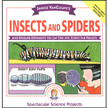 Metamorphosis is a term used to indicate something changing, such as the life cycle of a butterfly. The stages of this cycle are:
Metamorphosis is a term used to indicate something changing, such as the life cycle of a butterfly. The stages of this cycle are:
1. Eggs are laid on a plant leaf. Each egg develops into a caterpillar.
2. Caterpillars look much like tiny thin worms at first. They eat on the leaves of the plant where they were layed and grow very quickly. Some caterpillars are fuzzy, some have smooth colored skin, and some have spots or stripes depending on the type of butterfly.
Before the next step in the butterfly’s life cycle, the caterpillar attaches itself to a twig or stem. Each type of butterfly has its own technique for doing this. The Monarch butterfly secures its rear end to the twig and then hangs upside down as it sheds (molts) its last skin.
3. Chrysalis is the form after the caterpillar molts its last skin. A secretion on the outside dries forming a hardened surface. Inside the chrysalis, most of the caterpillar’s body breaks down into into imaginal cells, which are undifferentiated, meaning they could form any part of the adult butterfly (much like human stem cells). A few parts of the caterpillar’s body, such as the legs, are more or less unchanged. In time the chemicals making up the caterpillar recombine in a way that forms a shape very different from the worm-like caterpillar. The new shape is that of a butterfly with a body to which are attached colored wings, feet, and antennae.
4. Adult : The newly formed adult butterfly breaks out of the chrysalis. At first its body is wet. After a short drying period, the butterfly flies away.
1. Does temperature affect the the the length of the butterfly’s life cycle?
2. How damaging are caterpillars to plants?
FYI:
If you are preparing a science fair project, make sure you get the necessary permission to do an animal experiment.
DON”T injure the animals, treat them with care, and have a plan for what you are to do with them when the project is completed.
Note: Butterflies can be released. They will mate and start the life cycle over again as females lay eggs. Soon after mating the butterflies die.
For more information, see Monarch Butterflies.
 |
Janice VanCleave’s Insects and Spiders: Mind-Boggling Experiments You Can Turn Into Science Fair Projects |